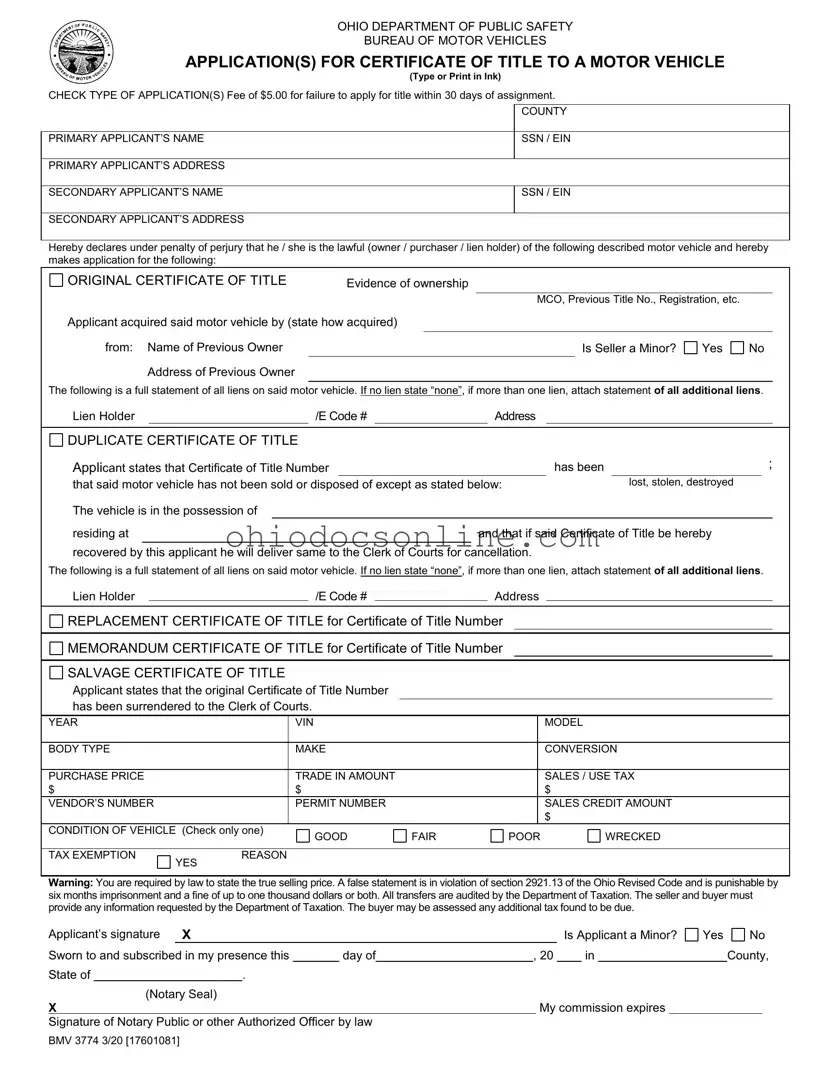Ohio Bmv Application Template in PDF
The Ohio BMV Application Form is a document used to apply for a certificate of title for a motor vehicle in Ohio. This form requires detailed information about the vehicle, the applicant, and any liens on the vehicle. Completing this application accurately is essential to ensure compliance with state regulations and to avoid potential penalties.
Open Editor
